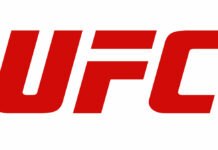Within the past few weeks, a spotlight was put on a continuous trend of WWE’s genre, the regular decline of the television ratings, suggesting that less viewers are drawn to the product on a weekly basis. This slip in numbers presents itself despite the sports entertainment empire offering more programming now than any other time in history, but perhaps that’s a part of the problem?
Depending on the week, Raw will average roughly 2.5 million viewers and Smackdown garners around 2 million viewers. More recently, those numbers have dropped to the point where there’s an average of just above 2 million viewers for each show, with Raw drawing slightly above and Smackdown just below that 2 million benchmark. In years past, 2 million viewers would be a panic mode for WWE brass, which still appears to somewhat be the situation now, but there doesn’t seem to be quite the sense of urgency some would expect for the publicly-traded company.
The reasons for the decline in numbers are numerous and complex, but a few broad general conclusions can be drawn from the direction of the product. Forgive me if I’ve covered these topics in some fashion before, but the explanation for the current landscape is not a new problem for WWE management. Possibly the simplest reason for the lack of buzz around the product is an over saturation of content, both on mainstream television and through the WWE network. Maybe this is too simplistic, but the traditional rule of supply and demand puts this scenario into perspective. In 1998 when the industry boomed in pop culture, professional wrestling churned out as many primary and secondary shows as the general public was willing to watch. Raw’s success as a top draw in cable brought with it the addition of Smackdown, Sunday Night Heat, and a myriad of syndicated shows with it. On the flip side, Nitro’s ability to outdraw Vince McMahon saw the Turner umbrella add a third hour that ultimately contributed to its downfall, Thunder as a compliment to the Monday night program, and a slew of international shows. The only reason any of that additional programming was brought to the table was because there was a market for it and more specifically, there was a demand for professional wrestling content so the audience watched more of the product. Is there really that type of demand for WWE shows in 2019? Granted, the third hour of Raw is justified by the millions of extra dollars the company is paid for it, but the show is beleaguered with the task of maintaining an audience for those three hours. As the numbers show, the third hour almost always drops compared to the initial two hours. There are three hours of Raw, two hours of Smackdown, pay-per-views that run over three hours on the network, and the network exclusive shows that don’t really have an impact on the product. Has anything noteworthy happened on 205 Live? There’s more programming without any indication of a demand for it so that is what leads to the decline.
This might sound too basic, but there’s also the aspect that even wrestling fans have a limit to how much wrestling they want to watch, especially causal fans. Sure, there are diehard fans that watch nearly everything and then meticulously critique it, but that’s a relatively small number in comparison to the WWE’s target audience. The diehard fans complain the most, but are the most loyal to the product so management’s problem has more to do with the draw of the general public.
I’ve discussed it before, and it’s a topic of regular debate from many that follow the sport, which is how the 50/50 booking that might attempt to protect talent actually hinders the process to make a star. A few months ago, I penned an article that explained that WWE brass took the steps to promote the brand ahead of the talent, making the company the draw instead of any particular star, which has its positives and negatives on each side. On one hand, if a major name gets injured, the writing team doesn’t have to scramble to book a way to elevate a competitor to carry the brand and can simply plug someone else into the same spot instead. On the other hand, that philosophy creates a certain level of mediocrity or complacency because very few get pushed as top-tier stars. For example, as great as Seth Rollins is in the ring, would it have made a difference in ticket sales or network subscriptions if Finn Balor was booked against Brock Lesnar at Wrestlemania? Lesnar is considered a priority by management so he’s showcased as a star, which allows him to move the needle. Granted, I’d still say that the WWE invested way too much into him in the past 3-4 years, but the point is, if Brock Lesnar appeared more often on Raw that would boost the numbers, simply based on the fact that he’s made to look like a star when he’s on-screen. Balor and Rollins are two of best athletes of their generation and some of the best performers on the roster, but the totality of their WWE career puts them at more or less the same level in terms of their ability to draw numbers. Don’t get me wrong, both have the ability to be money-drawing stars, but the structure of the product puts a ceiling on how over they can be with the audience.
Another aspect is the illogical presentation at various times during storylines, specifically random heel or baby face turns without explanation or reasoning. For example, Triple H and Stephanie are presented as heels or baby face depending on the specific angle that week. During the build up to Wrestlemania, it wasn’t determined if Triple H was a heel or not during promos in the ring with Becky Lynch. That’s only one storyline of several where the direction is murky and less effective than it could be if there was a direct path. Some nonsensical decisions should’ve been avoided in recent years as well. It’s a drastic example, but if Vince McMahon decided to wait until two years after the 3:16 promo to run with Stone Cold then he wouldn’t have been as over otherwise. The point is, there’s a specific time frame when a talent gets over and that competitor needs to be pushed at its peak to get as over as possible with the audience. The argument could be made that while the writing team tried to get Roman Reigns over despite the rejection of the crowd at the time, they actually missed the chance to elevate Braun Strowman to a level where he could be a money-drawing talent for the company. Along with that, Bayley, Sasha, Drew McIntyre, and others should probably be more established than they are right now. The rigid structure of the overall presentation of the product leads to the previously mentioned complacency and furthermore a lack of emotional investment in the storylines. Keep in mind, Vince McMahon has owned the professional wrestling market in the United States for nearly two decades so without the competition for the sports entertainment dollar on a national level, the corporate agenda can be pushed ahead of the fan demand. Prior to the pro wrestling monopoly, when a talent got over, the writing team had to run with it because otherwise the viewers could change the channel or spend their pay-per-view dollars on a different event. The emotional investment is key because that’s what draws the money in the business. Without the emotional investment, pro wrestling becomes interchangeable with any other form of entertainment. Perhaps, this is one of the many reasons it would be extremely beneficial to the industry if All Elite Wrestling can get off the ground of a national level because it could potentially shift the paradigm of the business.
This problem was seen more recently because the series of attempts to reignite interest in the shows are only a short term solution. That itself speaks volumes to the lack of weekly interest in programming when numbers are low just a month after Wrestlemania. As long ago as the original brand extension in 2002, I thought the concept of different stars on specific brands with more belts was too convoluted for the main stream fans. During the boom period of the 90s, if a casual fan asked, “who’s the champion?” there was an answer that gave an indication of who the top star was at the time. Now, there’s a superstar shake up, a wild card rule, more titles that anyone can reasonably keep track of, and an lack of continuity on television. Instead of all that, how about a compelling feud that viewers want to watch?
The NXT stars brought to the main roster just for the pop are featured for that specific week and then get lost in the shuffle because there wasn’t a plan for them other than the pop for their debut. Even the title matches that were put on television were designed to try to boost a number that week, not for an angle that could build to the following week.
That being said, and as I’ve written before, all of this might be a moot point, considering that the WWE will generate record-setting revenue next year and will have the most profitability in the history of the company. The start of their $2.5 billion TV contracts is later this year and the current stock price is roughly $84 so despite the slump in viewers, the company is still very financial secure. In fact, the company is extremely successful from a business prospective. However, the bigger picture might be that the WWE is cashing in on the major TV money offered now, and the structure of the product necessary for the money could hinder the ability to make stars for the future.
What do you think? Comment below with your thoughts, opinions, feedback and anything else that was raised.
Until next week
-Jim LaMotta
E mail [email protected] | You can follow me on Twitter @jimlamotta







